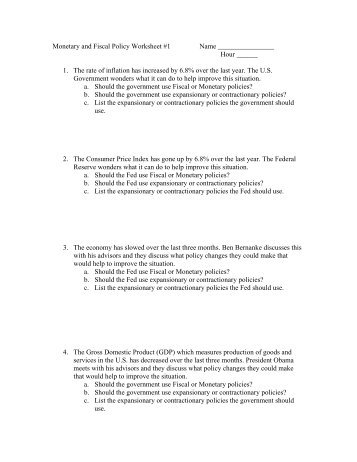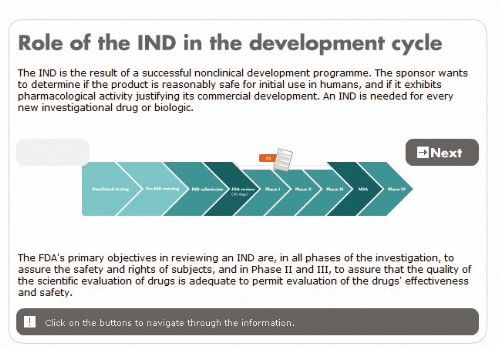Contents:


Having the receivables turnover ratio ready can make that calculation significantly quicker. To start with, the accounts receivable turnover represents an efficiency ratio. Thus, its main purpose is to assess the number of times a firm can turn its accounts receivables into cash over a specific timeframe. That is to say, this ratio calculates how many times a firm is likely to collect its average accounts receivable over a given year. So, with net credit sales of $2,000,000 and average accounts receivable of $400,000, Company X’s receivables turnover ratio was 5.0. Finally, you’ll divide your net credit sales by your average accounts receivable for the same period.
Fixed Asset Turnover Ratio Explained With Examples – Investopedia
Fixed Asset Turnover Ratio Explained With Examples.
Posted: Tue, 28 Mar 2017 11:14:38 GMT [source]
At the same time, low receivables turnover may be caused by a loose credit policy, an inadequate collections effort, and/or a large proportion of customers having financial difficulties. You can also use an accounts receivable turnover ratio calculator – such as this one – to work out your AR turnover ratio. Assuming you know your net credit sales and average accounts receivable, all you need to do is plug them into the accounts receivable turnover ratio calculator, and you’re good to go. The receivables turnover ratio is an accounting method used to quantify how effectively a business extends credit and collects debts on that credit. The accounts receivable turnover ratio is important because it gives you an idea of how successful your company is at collecting money owed.
Limitations of the Receivables Turnover Ratio
Here is an additional example, for situations where you don’t know the average accounts receivable. Understanding the business cycles and processes is key to making smart use of the ART ratio. If the Smith Company has a 30-day payment policy, then their average number of days for payment falls within their policy window.
- In other words, Company X collected its average accounts receivables five times during the one-year period.
- The first part of the formula, Net credit sales, is revenue generated for the year from sales that were done on credit minus any returns from customers.
- There is a lot of variation in this ratio, with some companies reporting turnovers of more than 100 times per year and others reporting turnovers of less than 1 time per year.
- As a result, customers might delay paying their receivables, which would decrease the company’s receivables turnover ratio.
- Since sales returns and sales allowances are outflows of cash, both are subtracted from total credit sales.
- The numerator of the accounts receivable turnover ratio is net credit sales, the amount of revenue earned by a company paid via credit.
When doing budgeting report modeling, businesses will also use receivables turnover in days to forecast their accounts receivable balance. They’ll do this by multiplying their revenue for each period by their turnover days, then dividing the product by the number of days in the period. To calculate your accounts receivable turnover, you’ll need to determine your net credit sales. To do this, take your total sales made on credit and subtract any returns and sales allowances. You should be able to find this information on your income statement or balance sheet. Generally, the higher the accounts receivable turnover ratio, the more efficient a company is at collecting cash payments for purchases made on credit.
Usefulness of the Accounts Receivables Turnover Ratio
All in all, accounts receivable turnover is a crucial measure for any business looking to maximize their profits and maintain financial health. A low accounts receivable turnover ratio signals that a business may be having difficulty collecting payments from customers. Companies with consistently low ratios may experience cash flow issues due to outstanding invoices and high levels of bad debt. Common causes of low ratios include stringent payment terms, outdated collection procedures, and insufficient customer relationship management.
Doing this will help improve your accounts receivable turnover rate by allowing you to quickly follow up on any overdue payments and resolve outstanding balances. By tracking it over time, companies can identify areas where their credit policies need improvement in order to make it easier for customers to pay and maximize their profits. Additionally, tracking the AR turnover rate reveals any potential issues or problems that could be affecting customer payments.

If you’re struggling, you should be able to find your net credit sales on your balance sheet. The best way to not deal with Accounts Receivable problems is not to have accounts receivable. That might not be possible for all business but there many industries that are able to accept pre-payment before providing a good or service. Here are a few tips to help you improve your Accounts Receivable process to cut down collection calls and improve your cash flow. Every company is different, and not all of them will conduct a significant portion of their sales on credit.
This means that Bill collects his receivables about 3.3 times a year or once every 110 days. In other words, when Bill makes a credit sale, it will take him 110 days to collect the cash from that sale. If a company can collect cash from customers sooner, it will be able to use that cash to pay bills and other obligations sooner. The first way to assess your ART ratio is to look at it in terms of other periods. If you calculate it monthly, how has the number adjusted month over month?
Accounts Receivable Turnover Ratio Calculator
Keeping up with your accounts receivable is key to maximizing cash flow and identifying opportunities for financial growth and improvement. In being proactive and persistent in ensuring that debts owed are paid in a timely fashion, businesses can boost the efficiency, reputability and profitability of their financial endeavors. Tracking your accounts receivable ratios over time is crucial to your business. If it dips too low, it’s an indication that you need to tighten your credit policies and increase collection efforts.

Sage 300cloud Streamline accounting, inventory, operations and distribution. Sage 300 CRE Most widely-used construction management software in the industry. Sage Intacct Advanced financial management platform for professionals with a growing business. Providing breakthrough software and services that significantly increase effectiveness, efficiency and profit. We can provide clear, in-depth, and up-to-the-minute insight into your business, allowing you to spend less time on finances, and more time on the big picture. Our writing and editorial staff are a team of experts holding advanced financial designations and have written for most major financial media publications.
The longer you let it go, the harder it will be on positive https://1investing.in/ cash flow. Another limitation is that accounts receivable varies dramatically throughout the year. These entities likely have periods with high receivables along with a low turnover ratio and periods when the receivables are fewer and can be more easily managed and collected. A high ratio can also suggest that a company is conservative when it comes to extending credit to its customers. Conservative credit policies can be beneficial since they may help companies avoid extending credit to customers who may not be able to pay on time. You can reduce the costs in account receivables and improve your ratio by encouraging cash sales, in which customers pay ahead or in cash, rather than on credit.
When analyzing the balance sheet, investors can calculate how quickly customers are paying their credit bills, and this can offer insight into the health of the organization. A higher accounts receivable turnover ratio is desirable since it indicates a shorter delay between credit sales and cash received. On the other hand, a lower turnover is detrimental to a business because it shows a longer time interval between credit sales and cash receipts. Additionally, there is always the possibility of not recovering the payment. Owl Wholesales’ annual credit sales are $90 million ($100 million – $10 million in returns). Their starting and ending receivables are $10 million and $14 million, which means their average accounts receivable balance is $12 million.
Availability of cash for the working capital, e.g., paying bills and other short-term liabilities. An accounts receivable is the sum of the beginning and ending account balances divided by two. She is passionate about telling compelling stories that drive real-world value for businesses and is a staunch supporter of the Oxford comma. Before joining Versapay, Nicole held various marketing roles in SaaS, financial services, and higher ed.
Formula
Compare The Turnover RatiosTurnover Ratios are the efficiency ratios that measure how a business optimally utilizes its assets to generate sales from them. However, this should not discourage businesses as there are several ways to increase the receivable turnover ratio that will eventually help them improve revenue generation. This way you will decrease the number of outstanding invoices in your books resulting in an increased receivable turnover ratio.
Working toward and attaining financial security requires businesses to understand their accounts receivable turnover ratio. This efficiency ratio takes an organization’s receivable balances and receivable accounts into consideration to determine the state of its cash flow. On the other hand, a low turnover ratio can indicate that there’s opportunity to more aggressively collect on older, outstanding receivables that are tying up working capital unnecessarily.
By accepting insurance payments and cash payments from patients, a local doctor’s office has a mixture of credit and cash sales. The accounts receivable turnover rate is 10, which means the average accounts receivable is collected in 36.5 days (10% of 365 days). A debtor’s turnover ratio demonstrates how effective their collections process is and what needs to be done to further collect on late payments. The longer the days sales outstanding , the less working capital a business owner has.

A good AR turnover ratio is highly dependent on the industry the company is within. For this reason, the AR turnover ratio should be compared with its competitors to decide whether it is good or not. Using the accounts receivable turnover calculator is one thing and understanding the data coming out of it is completely another ball game altogether.
- A high ratio can also suggest that a company is conservative when it comes to extending credit to its customers.
- That’s because it managed to collect twice the approximate number of average receivables.
- Our team of reviewers are established professionals with decades of experience in areas of personal finance and hold many advanced degrees and certifications.
- With the income statement in front of you, look for an item called “credit sales.”
- To understand how this ratio works, imagine the hypothetical company H.F.
- Generally, the higher the accounts receivable turnover ratio, the more efficient a company is at collecting cash payments for purchases made on credit.
Tracking your accounts receivable turnover will help you identify opportunities for improvements in your policies to shore up your bottom line. Tracking the turnover over time can help you improve your collection processes and forecast your future cash flow. Your banker will want to see this track to determine the bank’s risk since accounts receivables are often used as collateral. A higher accounts receivable turnover ratio will be considered a better lending risk by the banker.
Cash sales result in an upfront payment, so these don’t create receivables. Net credit sales are calculated as the total credit sales adjusted for any returns or allowances. All agreements, contracts, and invoices should state the terms so customers are not surprised when it comes time to collect. It doesn’t matter how busy the office is, no one gets paid if the bills don’t go out.


